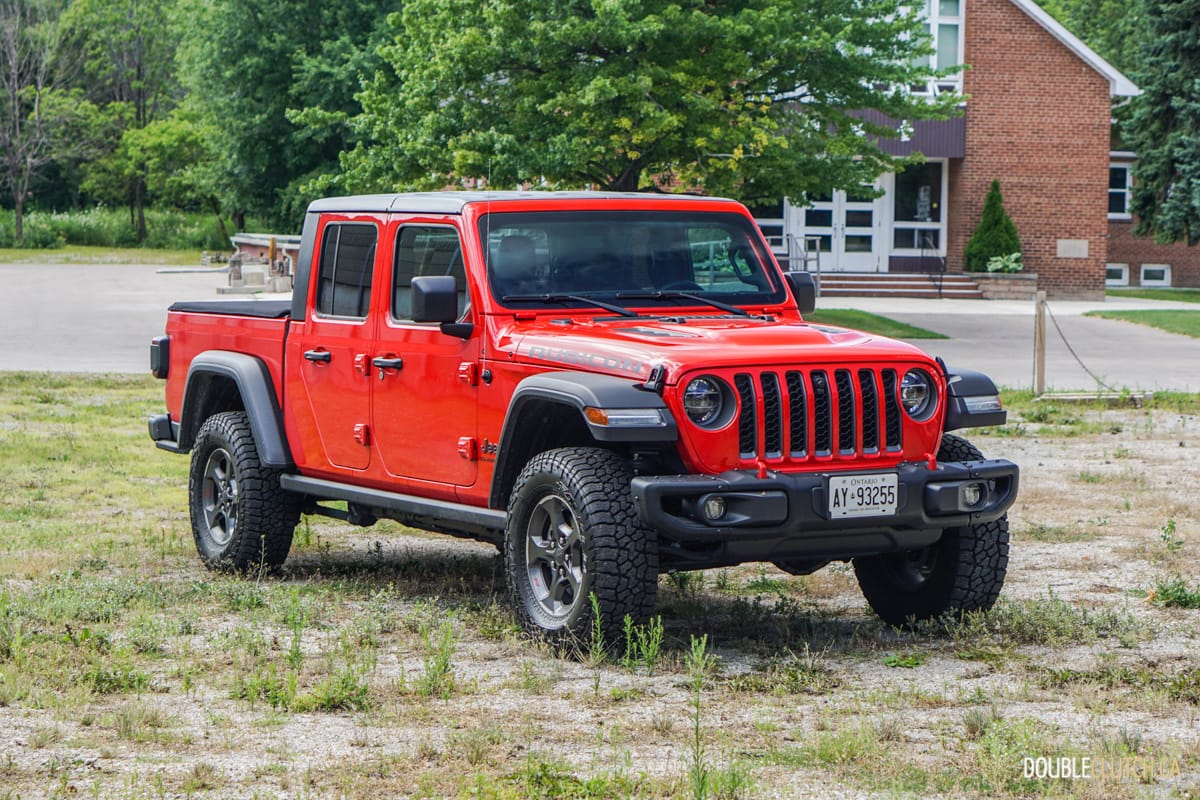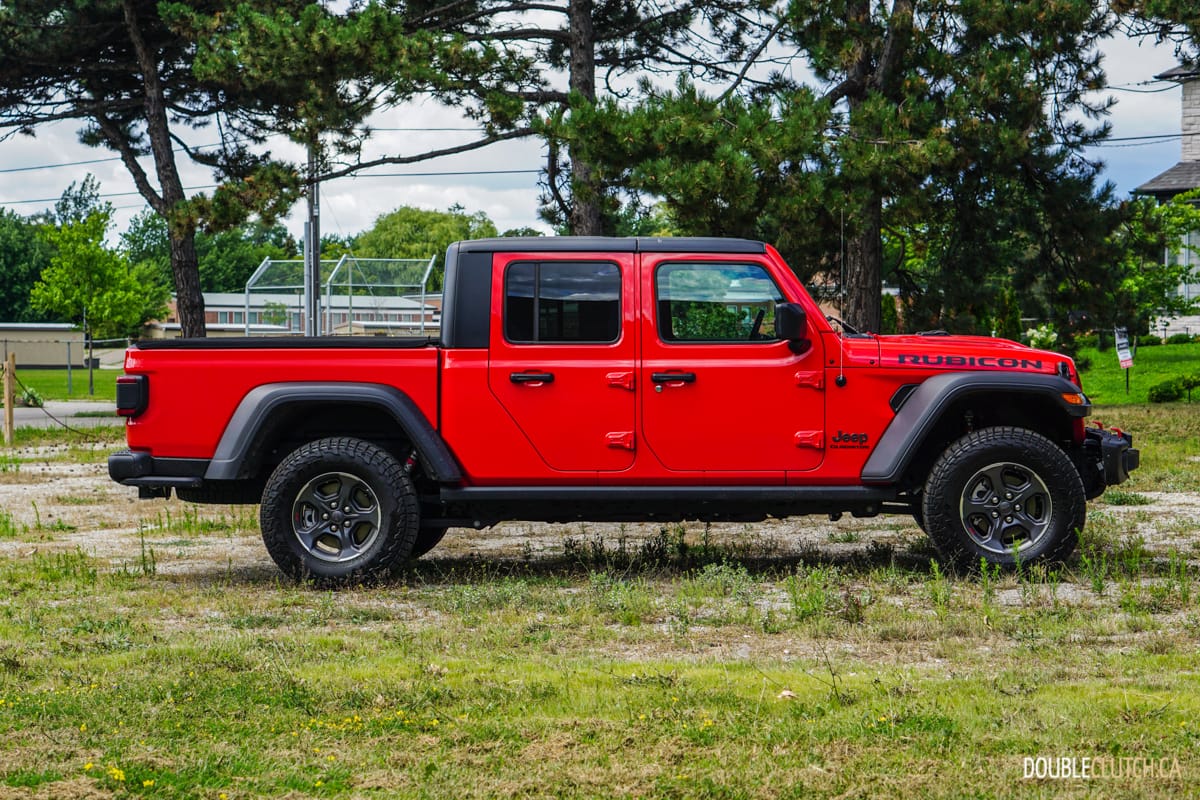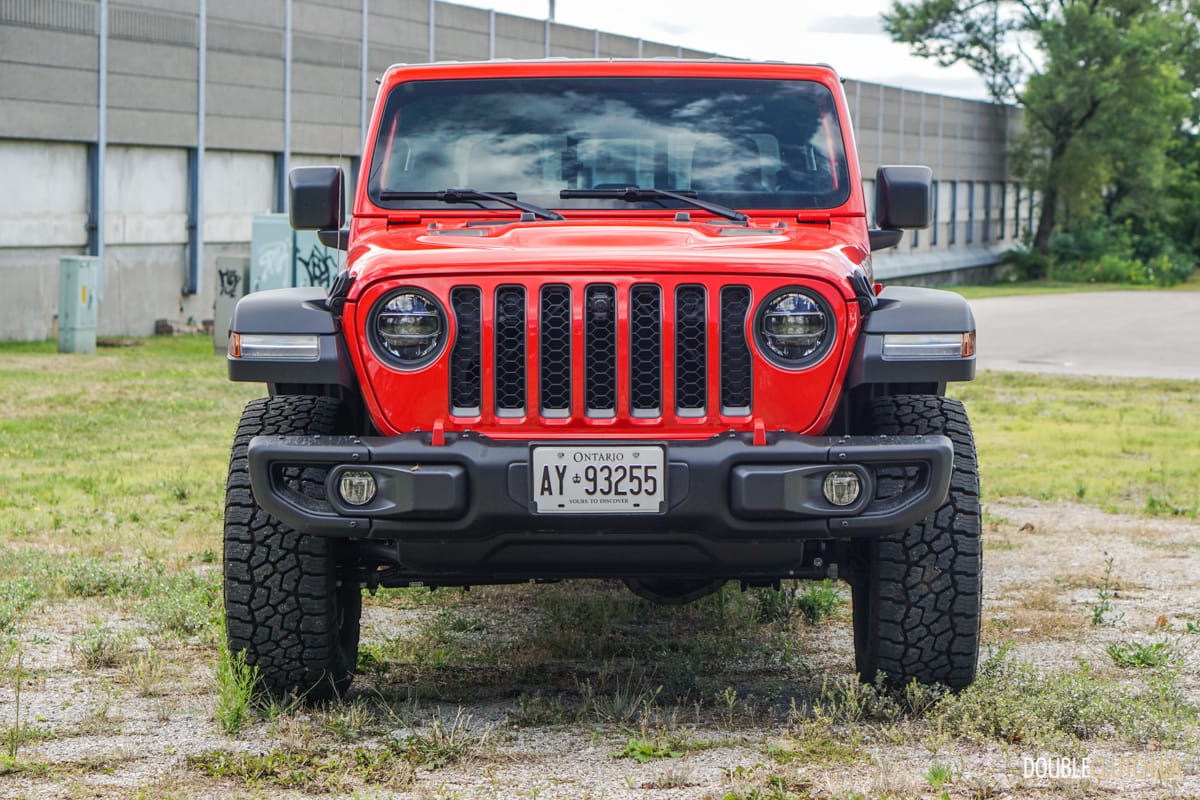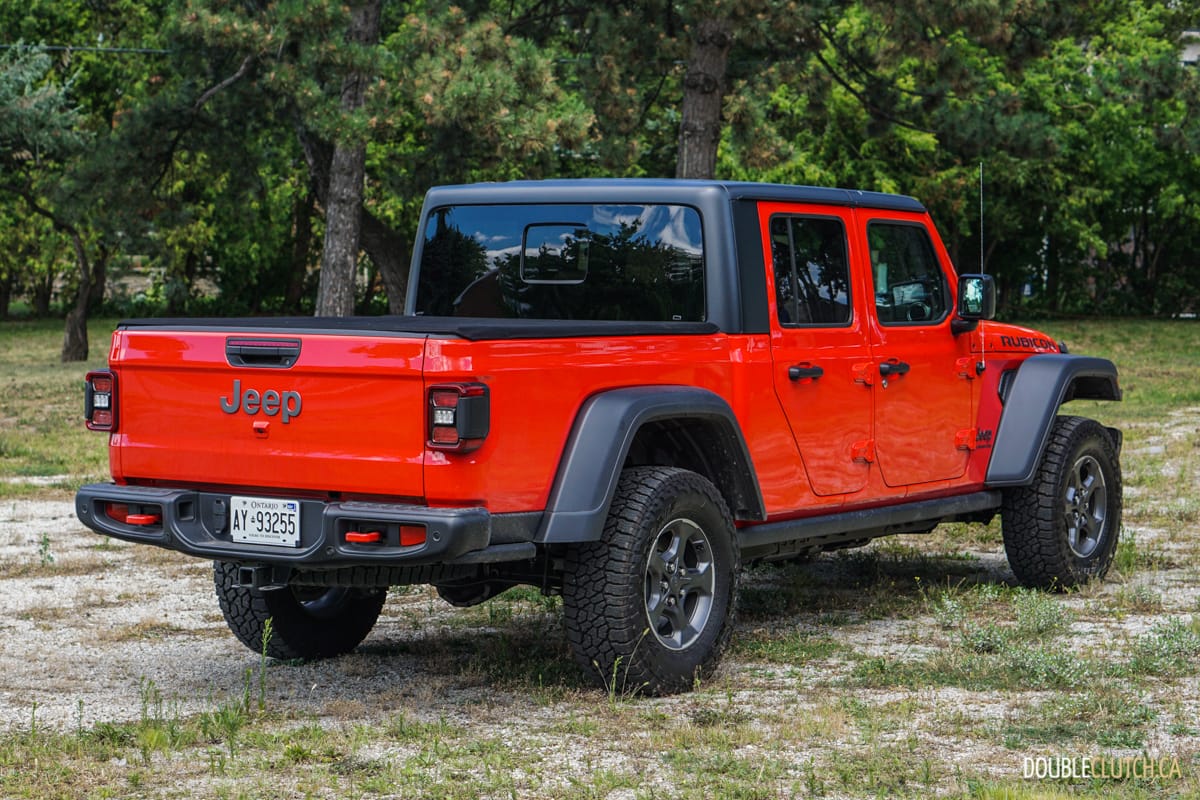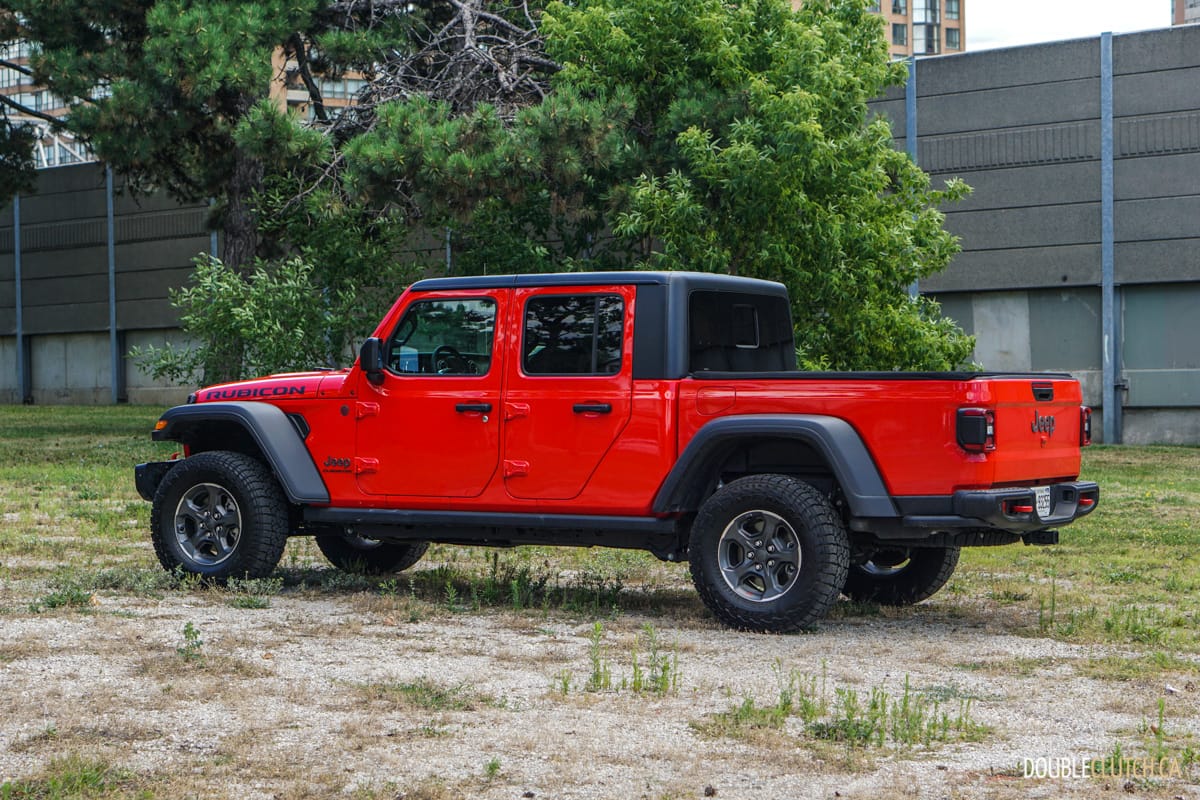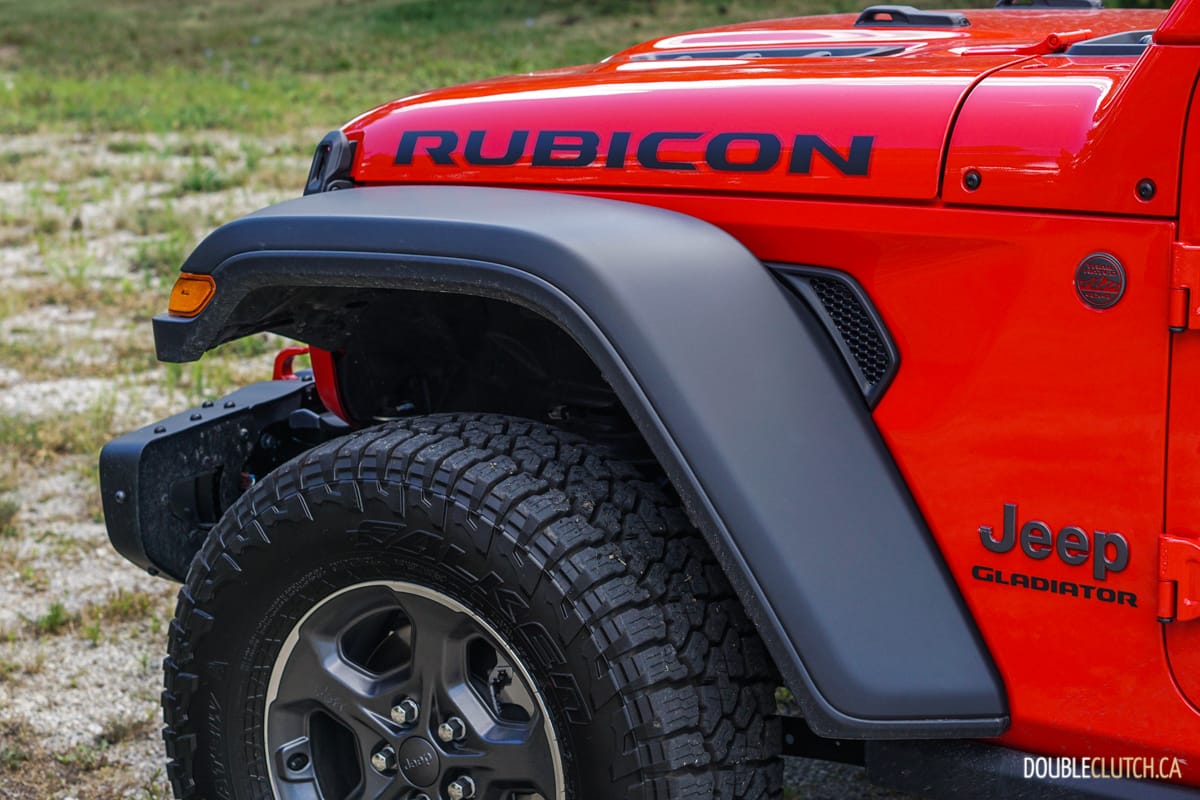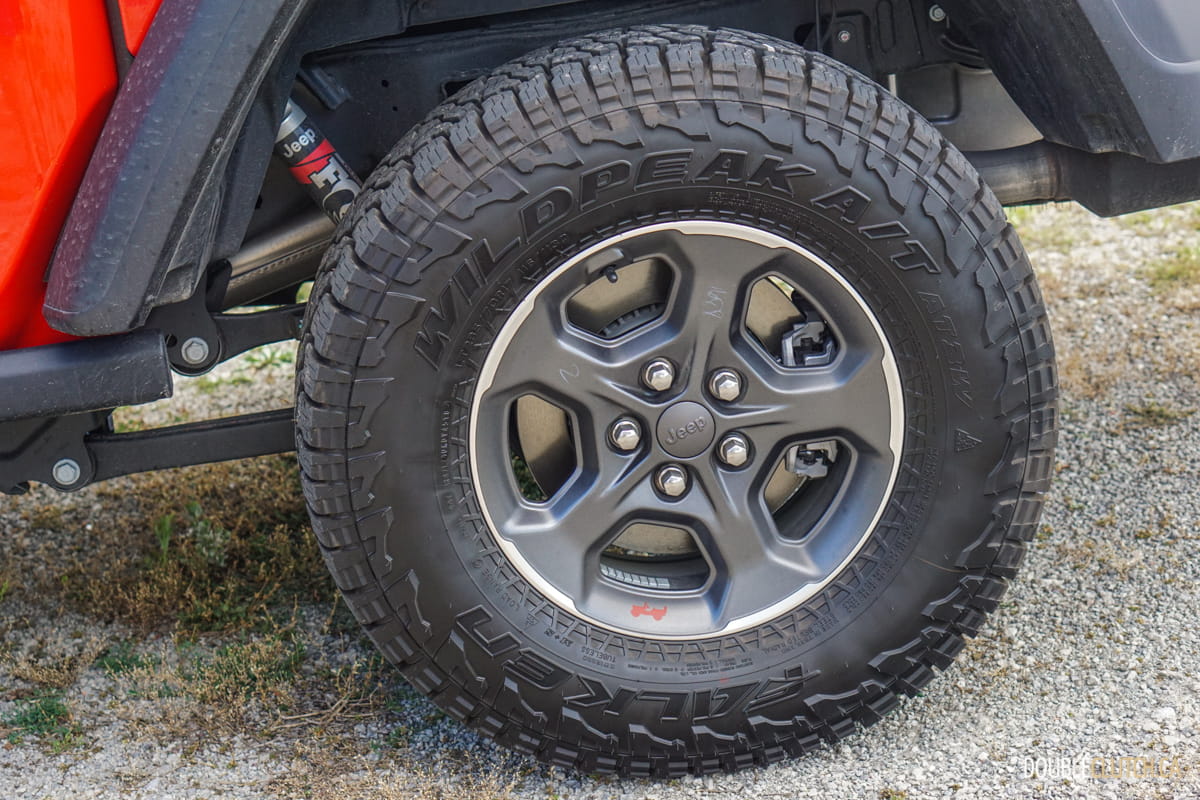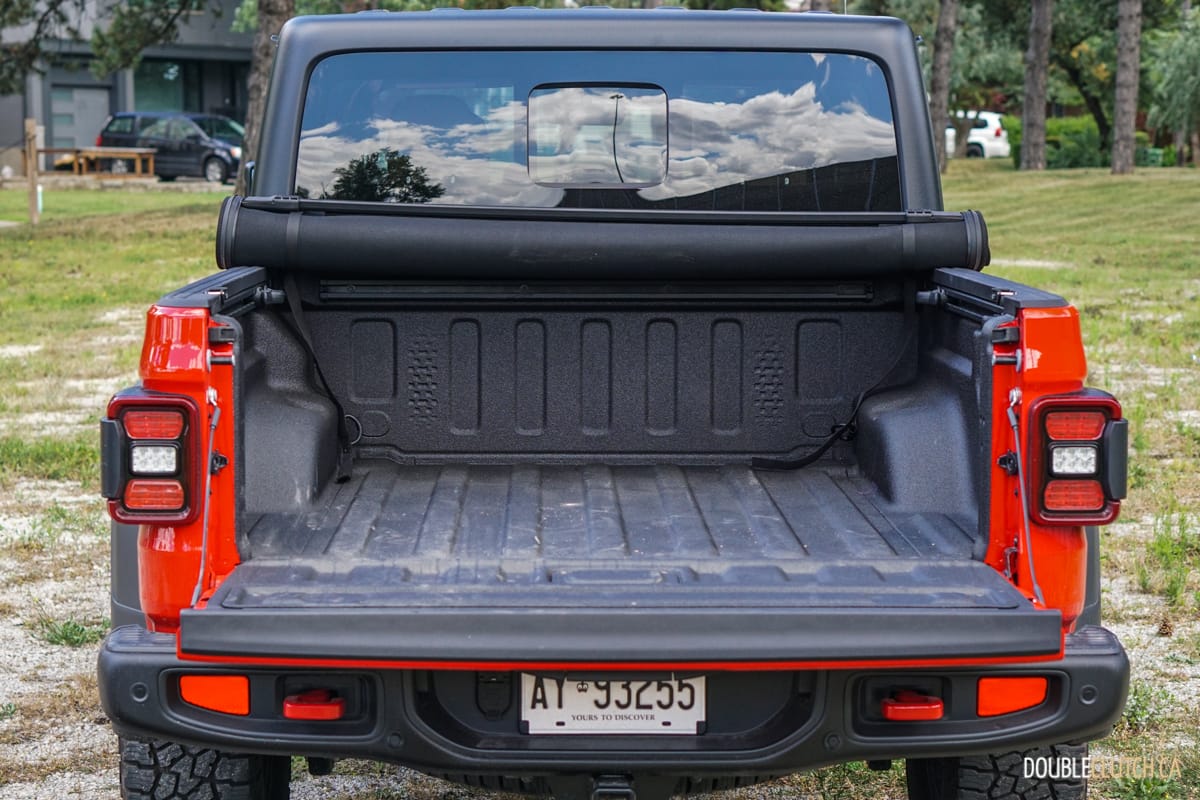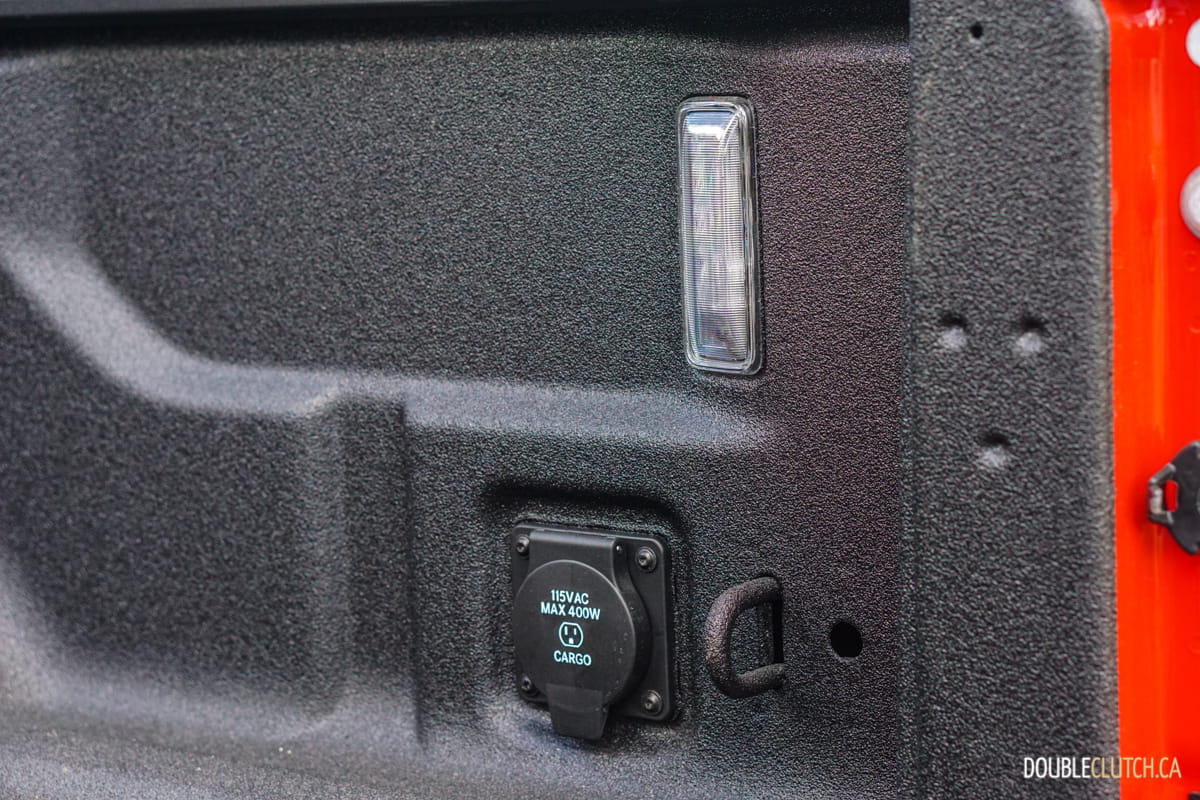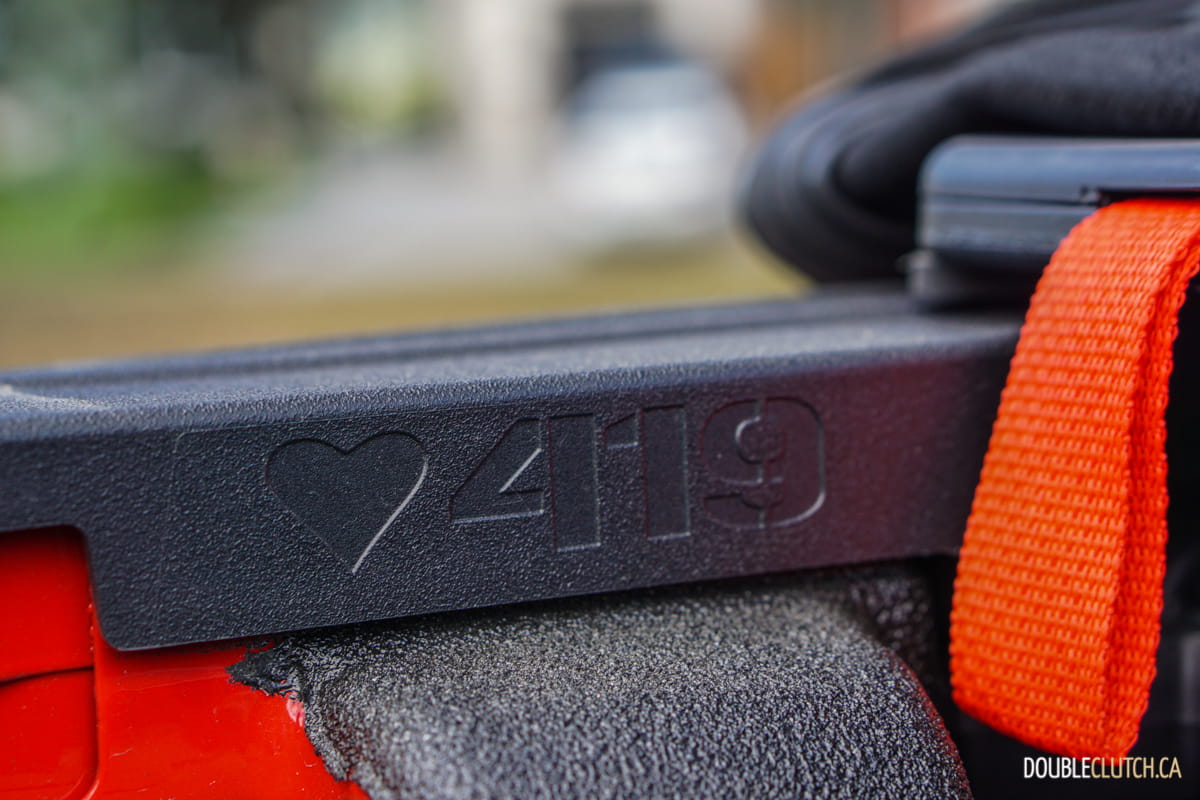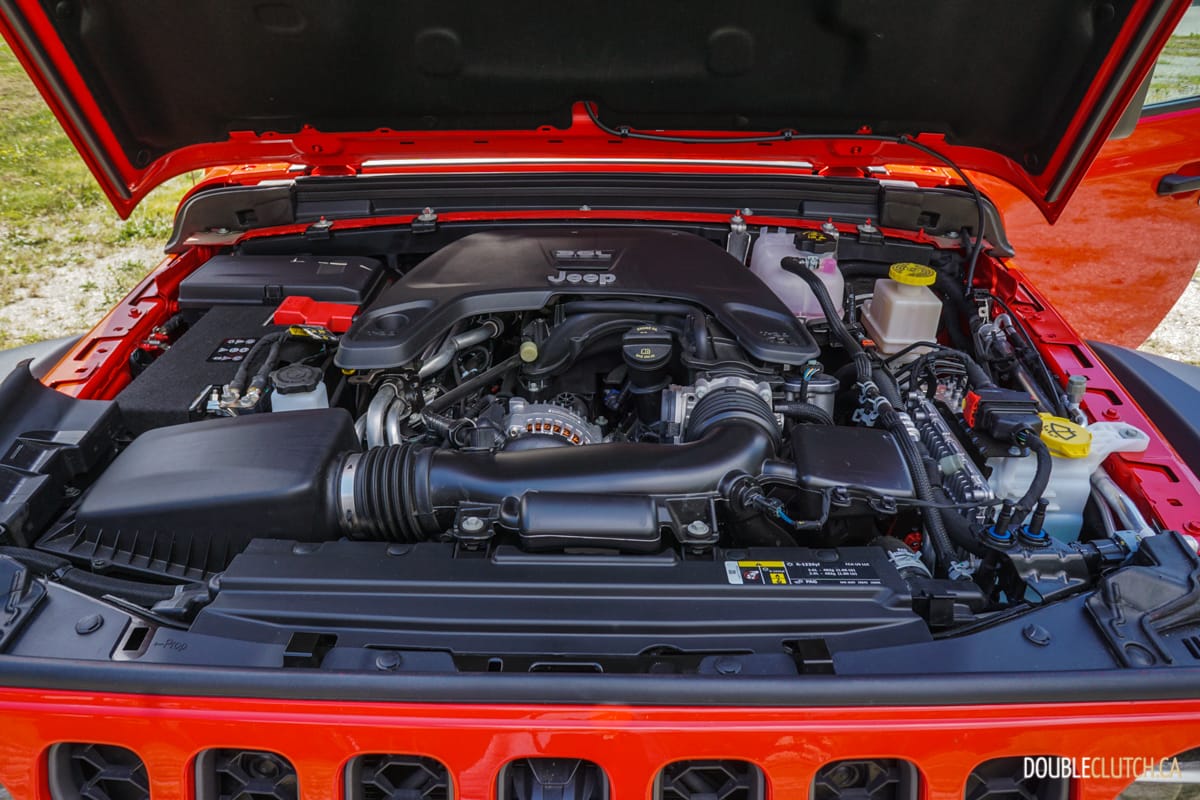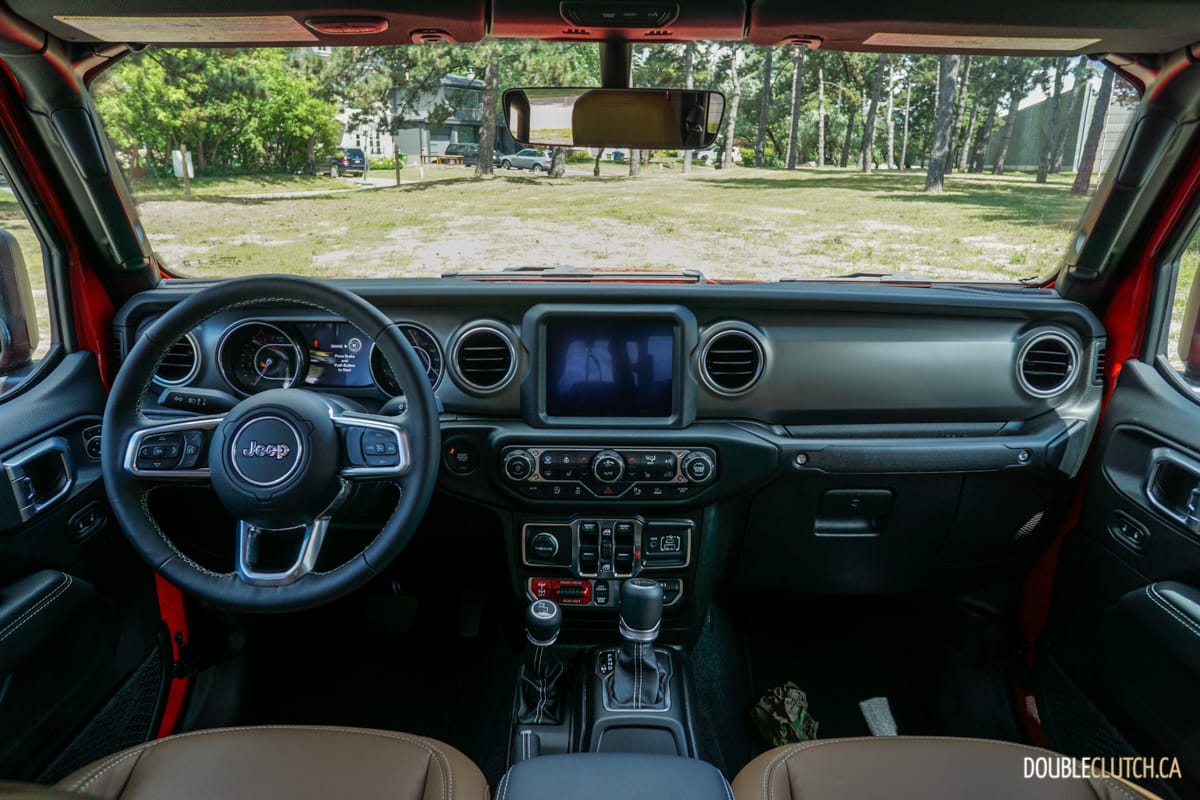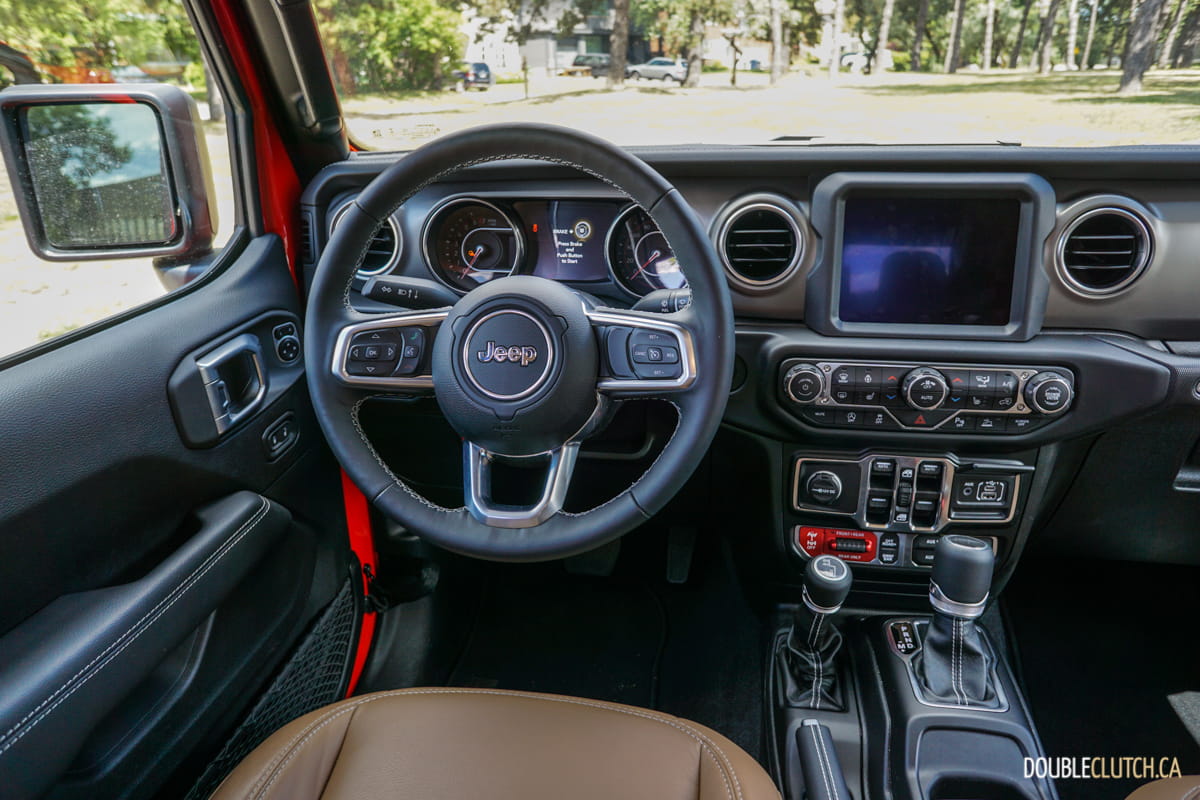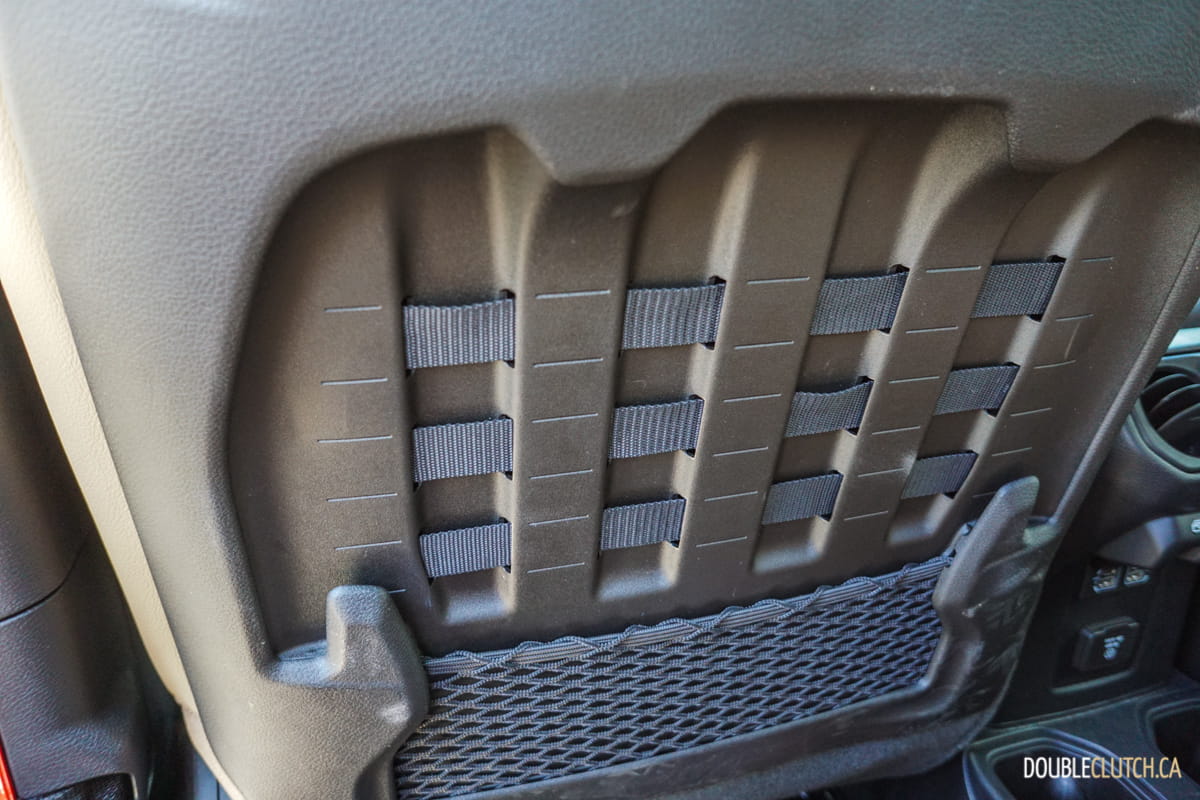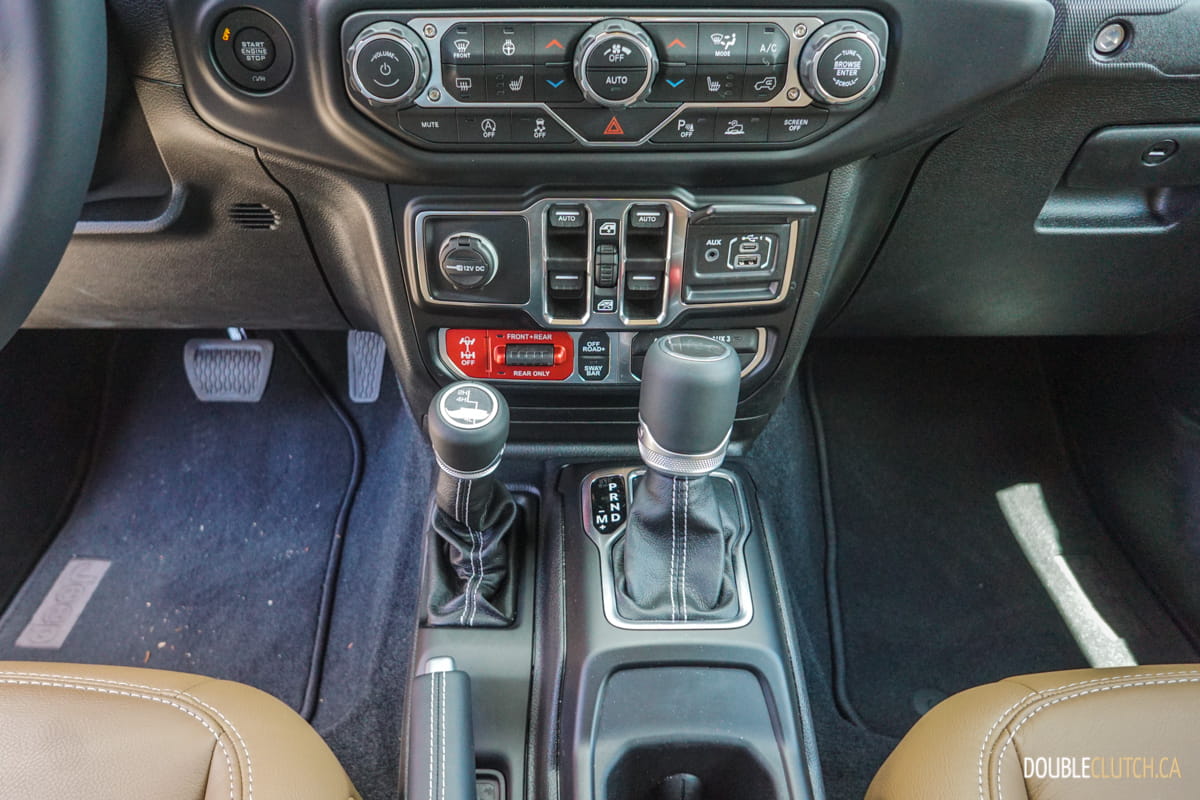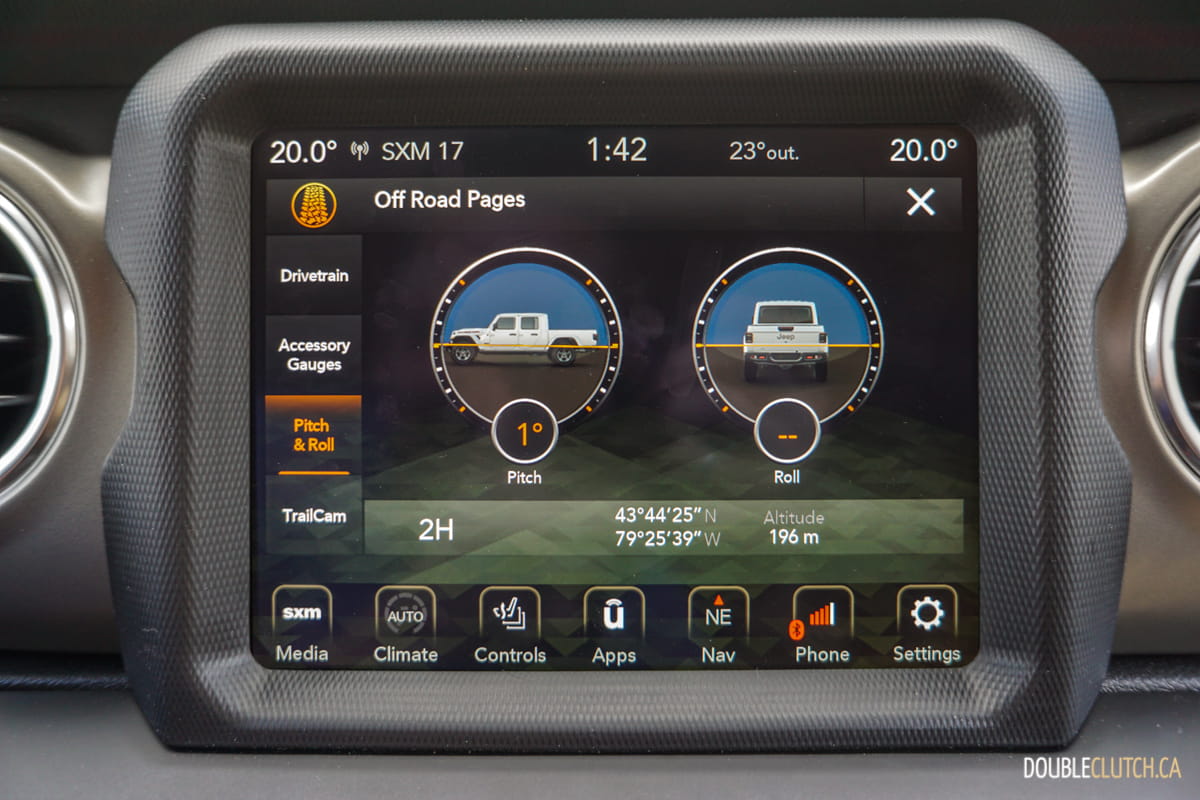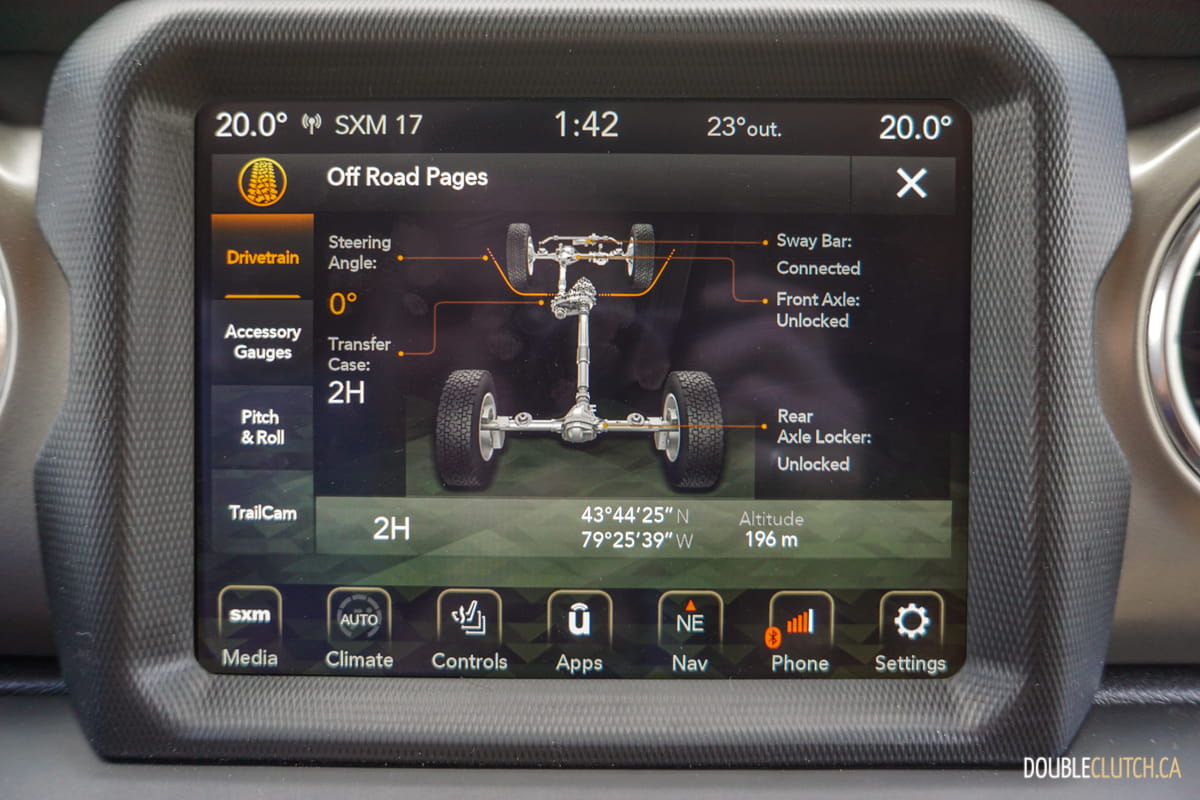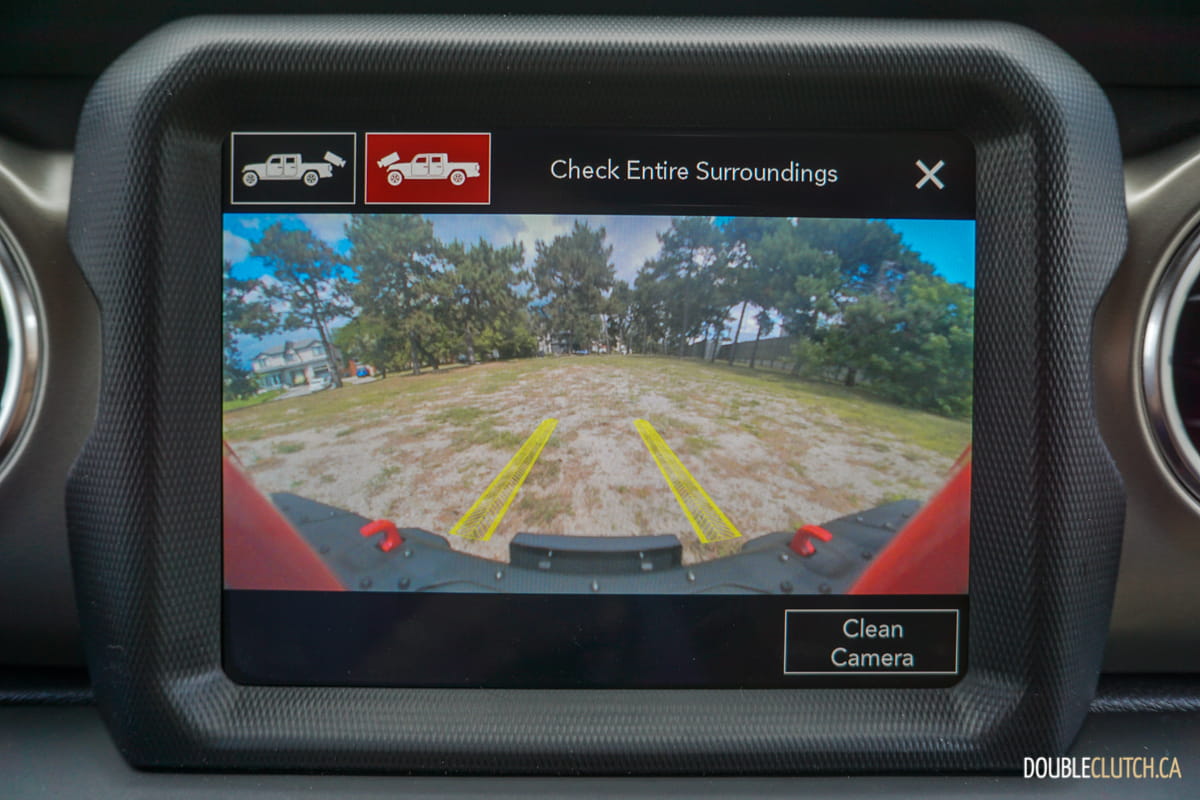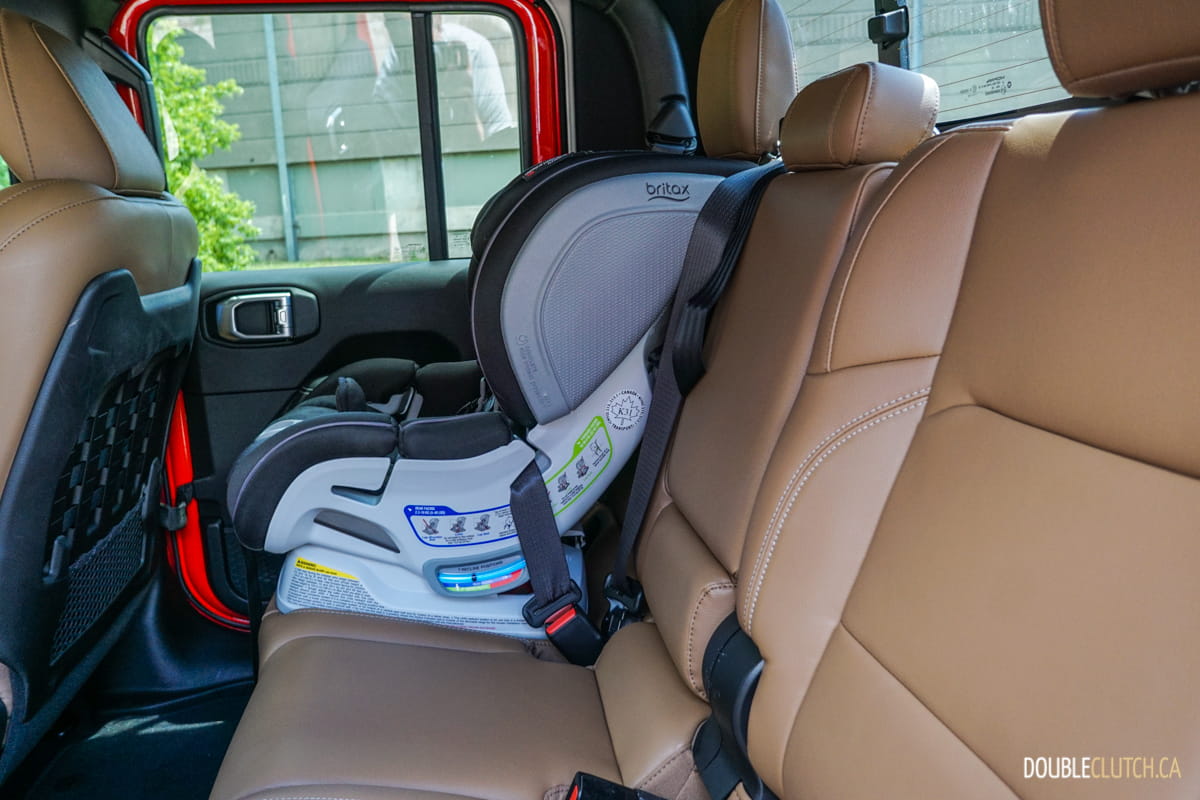After decades of aftermarket kits, begging customers, concept cars and rumours, the folks at Jeep have finally brought to market a pickup truck based on the iconic Wrangler. Despite looking very similar and sharing a plethora of parts with the current generation (JL) Wrangler, the Gladiator (codenamed “JT”) is so fundamentally different than the Wrangler that it was given its own name. After a first drive in California earlier this year, the truck has graced us for a week’s worth of testing, in the form of the off-road capable 2020 Jeep Gladiator Rubicon.
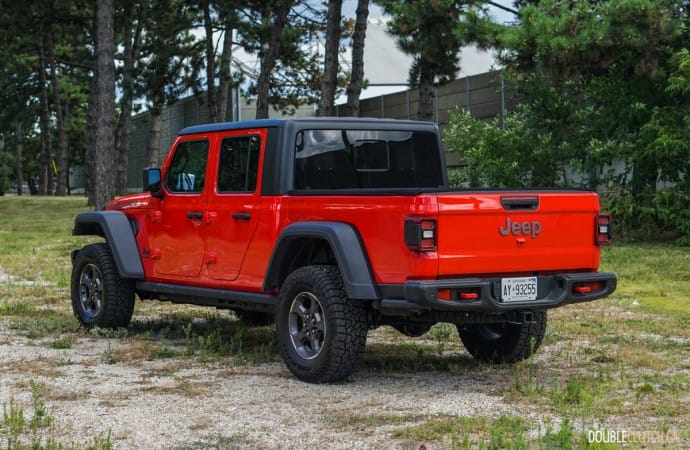
Building upon the capabilities of the Sport S and Overland models, the Rubicon kicks everything up to a whole different level, quite literally. The Rubicon model is lifted two inches higher off the ground than other models, to allow for added ground clearance when hitting the trails, and larger diameter tires if necessary to crawl along the rocks.
Mechanically, the Rubicon is all sorts of different as well. Along with the expected underbody skid plates and rock protection, the front and rear axles are upgraded to heavy-duty, lockable versions of the Dana M210 (front) and M220 (rear) axles found in the standard Gladiator, and equipped with 4.10 gear ratios in the differentials. The Command-Trac transfer case is eschewed for a more heavy-duty Rock-Trac unit, which loses the on-the-fly ability to switch between 4×2 and 4×4 modes, in exchange for a 4:1 low-range to really get your crawl on. Suspension upgrades are present, with Jeep-branded Fox Shocks, and a front sway bar that can be disconnected remotely with the push of a button to let the front end articulate up to 30% more.

It’s hard to say whether the Rubicon or the Overland is the top-tier model, but rather they should be seen as parallel choices depending on your preference that can be optioned way up to the top end. At a starting MSRP of $53,995, the Rubicon starts off $3,000 higher than the Overland, but loses a lot of features like the shift-on-the-fly 4×4 capability, painted bumpers, gets a downgrade to 17” wheels, and comes standard with the soft-top instead of hard top.
Our test vehicle had just about every single option box ticked to help make this one seriously awesome truck at an as-tested price of $67,555 before fees and taxes. Notable omissions at this price level being the Dual-Top Group and the Advanced Safety Group that would have enabled Forward Collision warnings and active braking. That said, most Rubicon buyers would favour the off-road bits rather than the active safety features.
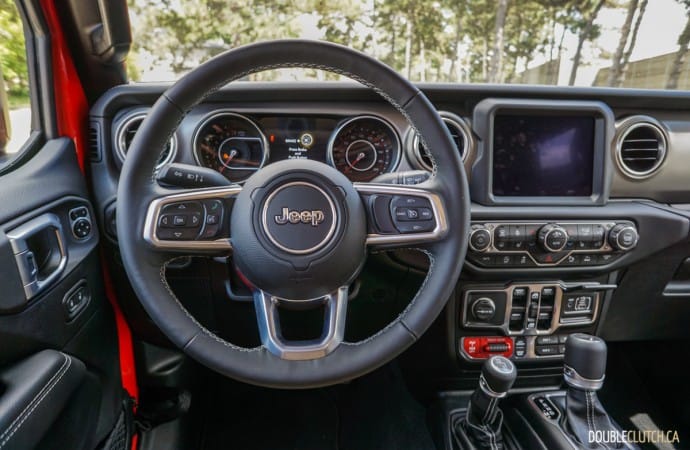
The interior of the Gladiator is a fairly familiar sight to anyone who has been in a JL Wrangler. The front seats and dashboard are nearly identical, with the optional 8.4-inch Uconnect screen right in the middle, and 4×4 shifter in the console right next to the gear selector. As in the Wrangler, there are images and emblems everywhere to remind you that you’re in a Jeep, and the Gladiator has a fantastic silhouette of the Jeep pickup truck right on top of the gear shifter.
Seats are emblazoned with the Rubicon logo of course, and red metal accents are placed throughout the interior to indicate the special off-road additions. The second row is where things get a bit different, as the seat design needed to be adapted to a pickup truck body, instead of a fold-flat style seat to expand the trunk. The seatbacks fold forward to reveal anchor locations for car-seats, as well as little storage bins including a spot for the optional Jeep-branded Bluetooth speaker to stay charged. Flipping up the seat cushions reveals lockable storage areas and a handle that can be used for the middle seat passenger to grab onto during an intense off-road session.
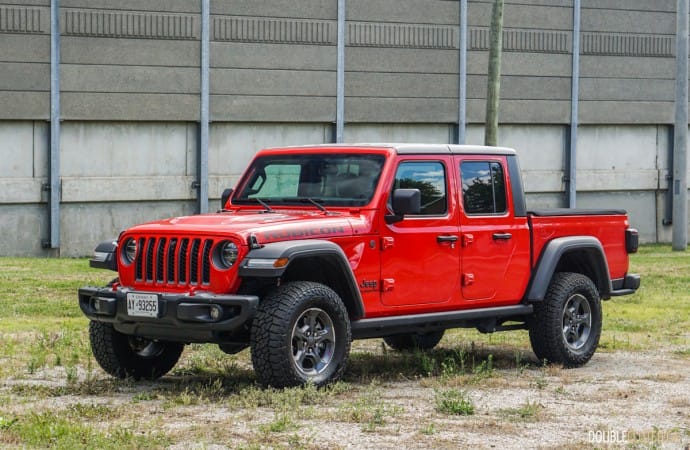
The Gladiator, being a pickup truck, warrants a discussion of how truck-like it is. With a five-foot bed and the ability to carry 48-inch wide materials situated above the wheel wells, the bed can do an acceptable job at the hardware store. The tailgate is advertised as being a three-position gate, but we were unable to get it to sit in the halfway position during our test. When fully open, the tailgate extends the bed nicely and has a soft opening hinge.
Payload varies based on trim level, with the Rubicon having a rating of 544 kg (1,200 pounds) in the bed. This is less than the Sport S can handle, and significantly less than competitors like the GMC Canyon (reviewed here) and Chevrolet Colorado can hold. Towing capacity varies as well, with the Rubicon rated at a comfortable 3174 kg (7000 pounds), a number that puts it right in line or above with the other trucks in the segment, besting what the rugged Toyota Tacoma (reviewed here) can haul.
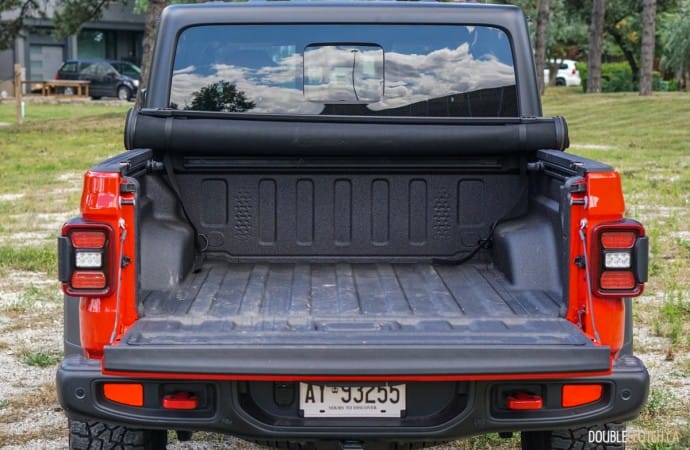
Where the Gladiator really shines as a truck is in all of the things that make it quintessentially a Jeep. No other vehicle lets you haul several tonnes of boat, with all of your gear in the bed, all while having no roof or doors on. The windshield, of course, folds down like the Wrangler, but that’s only for off-roading. You’d need to have it intact for on-road driving.
The front seat room of the Gladiator is very comfortable for adults, with the rear seats being fairly upright due to the pickup truck form factor, with stubby legroom. We tested a Britax Advocate Clicktight car seat, and the front seat had to be moved up a bit for everyone to fit. Two mid-sized adults found it to be a tight squeeze back there with the car seat since the Gladiator cab isn’t as wide as other trucks, so plan for this to be a four-person vehicle most of the time.

Under the hood is the ever-familiar corporate 3.6L Pentastar V6 engine. The 2020 Gladiator is expected to have a diesel engine option as well, but for now, the only spec you can buy comes with 285 horsepower at 6,400RPM and 260 lb-ft. at 4,800RPM. A rarity these days; both manual and automatic transmission are available, with our test vehicle equipped with the latter. The eight-speed automatic transmission is very well matched to the capability, with the benefits of a torque converter helping overcome the lack of torque at low RPMs. Another benefit of the automatic transmission is a higher towing capacity, as the manual Rubicon is capped at 4,500 pounds.
Fuel economy ratings for the Gladiator are surprisingly decent considering the boxy, minimally aerodynamic shape that is inherent to the Jeep’s styling. In city driving, the Gladiator is rated at 13.7L/100km, with highway and combined ratings of 10.7L/100km and 12.3L/100km, respectively. This is significantly better than the off-roading competition brought on by the Chevrolet Colorado ZR2 (reviewed here).

The most surprising thing about the 2020 Jeep Gladiator Rubicon is how incredibly easy it is to drive in the city. Once you get over how high it is off the ground, driveability is fantastic, with the long wheelbase absorbing the bumps and bustles, and the narrow body finding itself comfortable in narrow lanes. The Gladiator really is the mid-size truck that can do it all plus more, and it’s ready to climb to the top of the charts.
See Also:
2019 GMC Canyon All-Terrain
First Drive: 2019 Ford Ranger
2018 Chevrolet Colorado ZR2


